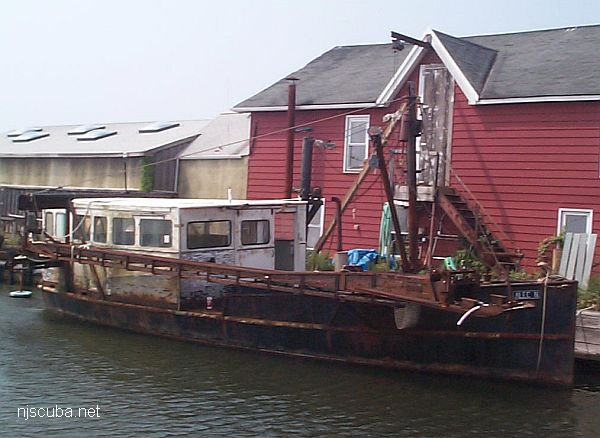
- Type:
- artificial reef, clam dredge, USA
- Built:
- ?
- Specs:
- ( 45 ft )
- Sunk:
- 1999 - Fire Island Artificial Reef
- Depth:
- 70 ft
- GPS:
- 40°35.961' -73°13.012'
More: Alec N ...
More: New York Artificial Reefs ...

More: Alec N ...

More: Ana Palmira ...
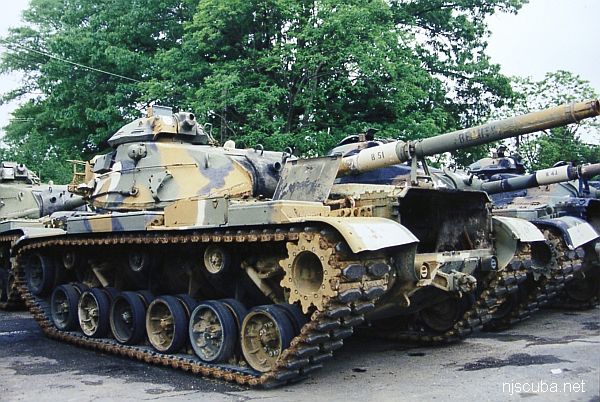
The Artificial Reef Program used four types of obsolete Army armored vehicles as artificial reef materials off the New Jersey coast. These were cleaned at local military bases, loaded onto barges for transport, and pushed off at their final destination. Once the Army had disposed of its excess inventory, the program ceased, around 1999. The Artificial Reef Program has sunk almost 400 tanks altogether, far too many to list them here in this website.
More: Army Tanks ...
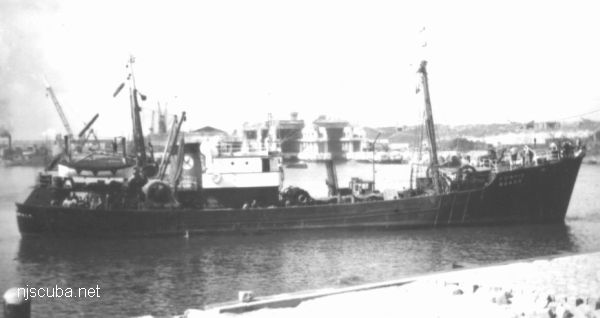
More: Bad Bob's Big Boat ...
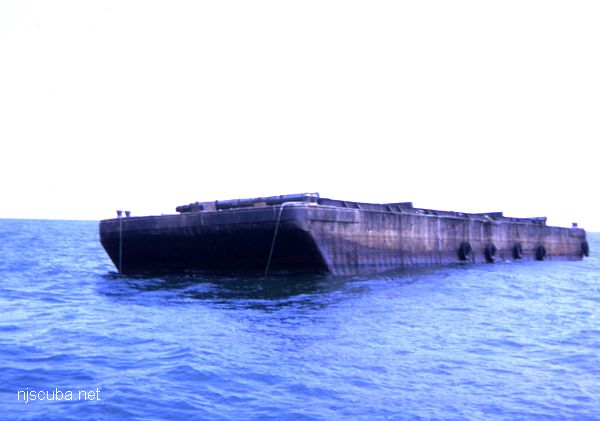
| Name | Description | Sunk | GPS |
| 80 ft steel | 40°31.884' -73°43.297' |
||
| 85 ft steel | 40°31.942' -73°42.894' |
||
| 100 ft steel | 40°31.631' -73°43.029' |
||
| 140 ft steel | 40°31.736' -73°42.736' |
||
| 150 ft steel | 40°31.903' -73°43.166' |
||
| 150 ft wood | 40°31.762' -73°43.306' |
||
| 75 ft steel | Thursday Nov 14, 2019 |
40°31.604' -73°43.611' |
More: barges - Atlantic Beach Artificial Reef ...
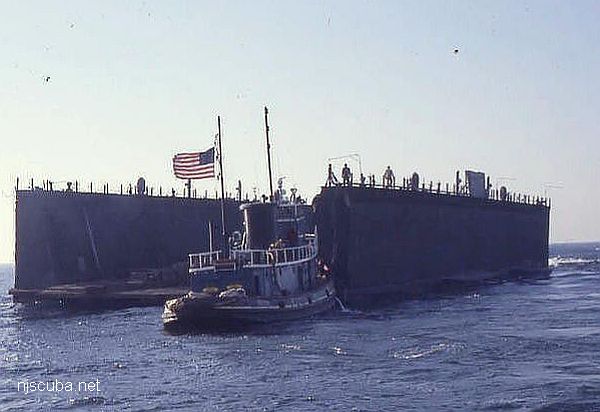
The "Ocean Prince" drydock (above) was sunk in 1986 and is well-attested. New York has photos of a clearly different drydock which they place here, but I believe is actually at Shinnecock, and I have placed it there.
| Name | Description | Sunk | GPS |
| 110 ft steel | Thursday Sept 9, 1999 |
40°35.973' -73°13.242' |
|
| Air Force Scow |
110 ft steel | Sunday Oct 14, 2018 |
40°35.914' -73°11.986' |
| Dump Scow DS-24 |
100 ft steel | Sunday Oct 14, 2018 |
40°35.838' -73°12.015' |
| Irvington | 60 ft steel | 2024 | 40°35.949' -73°12.308' |
| Piano Scow | 30 ft steel | Sunday Oct 14, 2018 |
40°35.872' -73°12.022' |
| "Ocean Prince" Drydock #4 |
200 ft steel drydock |
Saturday Nov 29, 1986 |
40°35.704' -73°11.968' |
More: barges - Fire Island Artificial Reef ...
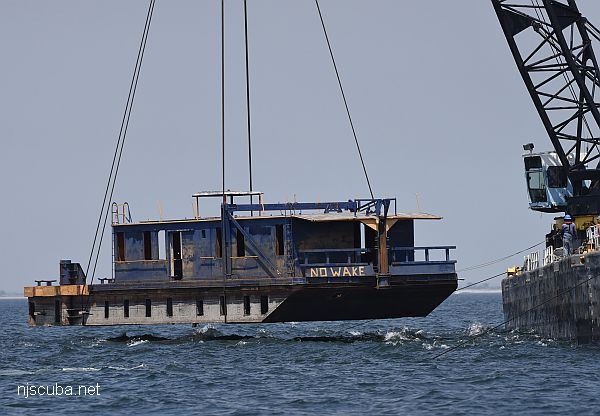
| Name | Description | Sunk | GPS |
| 115 ft steel | 40°31.145' -73°31.736' |
||
| 100 ft wood drydock |
1990 | 40°31.504' -73°31.914' |
|
| Navy | 110 ft steel | 1993 | 40°31.077' -73°31.476' |
| 40 ft steel dredge |
Wednesday Oct 4, 2000 |
40°31.010' -73°32.501' |
|
| 40 ft steel dredge |
Wednesday Oct 4, 2000 |
40°31.010' -73°32.501' |
|
| DB-1 | 75 ft steel derrick |
Friday Aug 10, 2018 |
40°30.971' -73°32.971' |
More: barges - Hempstead Artificial Reef ...
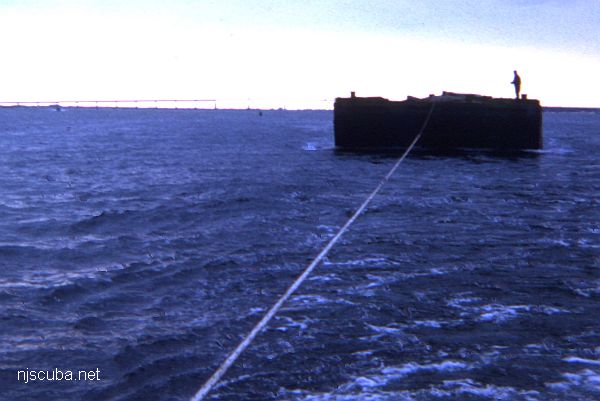
| Name | Description | Sunk | GPS |
| 85 ft | 1965 | 40°38.311' -73°12.435' |
|
| 100 ft | 1965 | 40°38.280' -73°12.496' |
More: barges - Kismet Artificial Reef ...
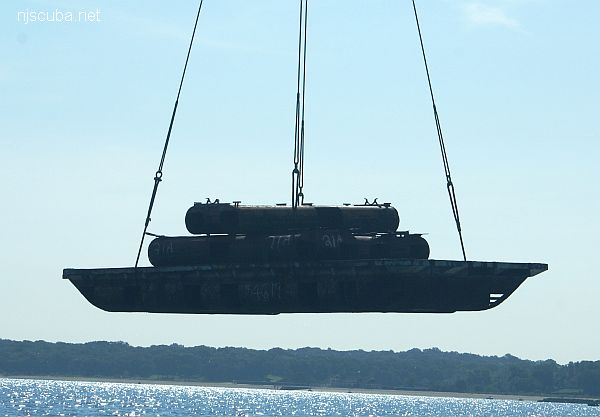
| Name | Description | Sunk | GPS |
| 46 ft steel | Thursday Aug 22, 2019 |
40°54.604' -73°37.477' |
|
| 40 ft steel | Thursday July 25, 2024 |
40°54.613' -73°37.394' |
More: barges - Matinecock Artificial Reef ...
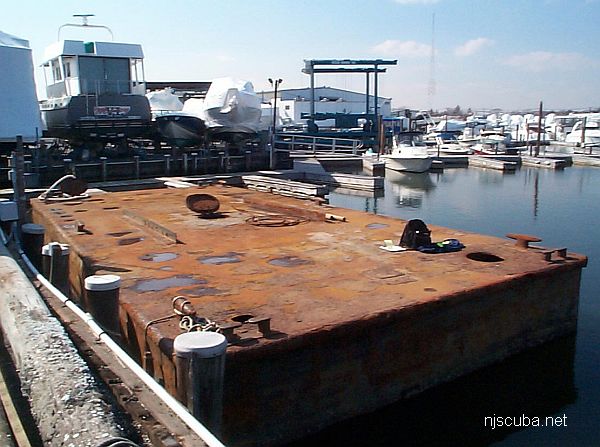
| Name | Description | Sunk | GPS |
| 60 ft steel | Tuesday (?) Sept 28, 1999 |
40°32.120′ -73°39.605′ |
|
| 40 ft steel dredge |
Thursday Sept 28, 2000 |
40°32.048′ -73°39.326′ |
|
| 40 ft steel dredge |
Thursday Sept 28, 2000 |
40°32.015′ -73°39.295′ |
|
| 37 ft steel crane |
2003 | 40°32.162' -73°39.481' |
More: barges - McAllister Artificial Reef ...